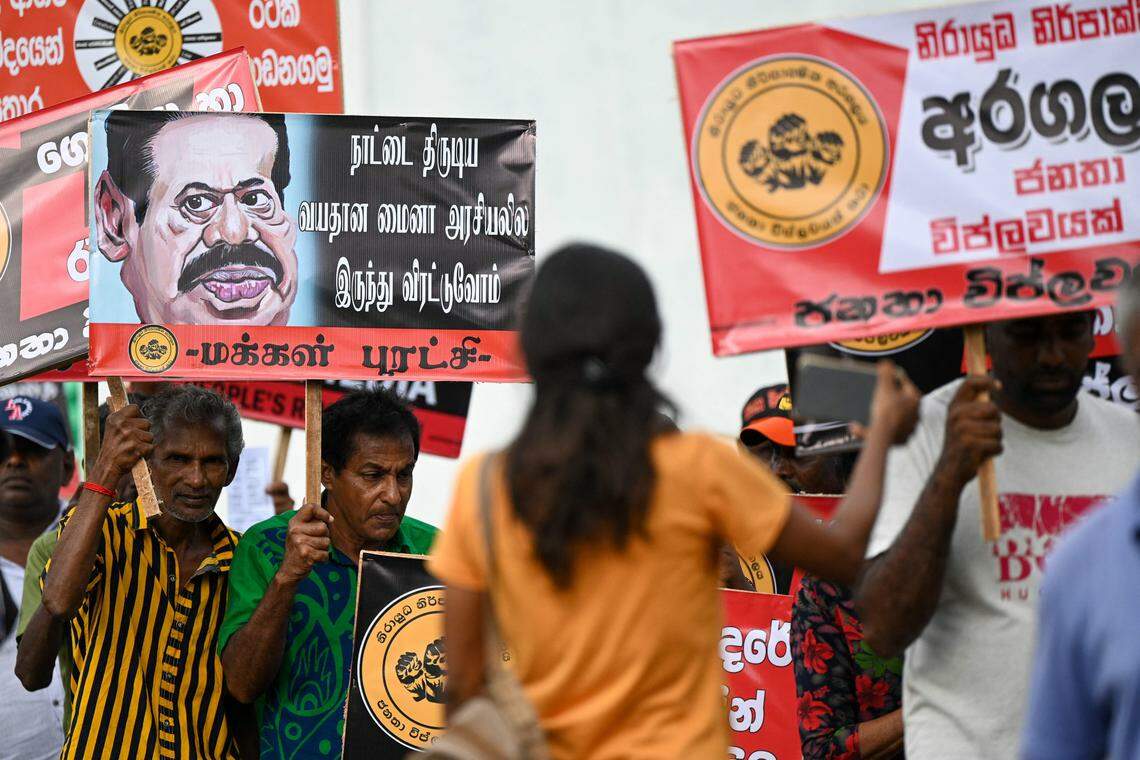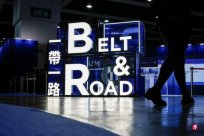
China ’s“ Belt and Road ”initiative with infrastructure investment as the core has expired for 10 years. This national strategy has made China’ s international discourse ’s right to rise sharply in 10 years, but also faces geopolitical conflicts, and debt issues in countries along the route.And the Chinese economy's downward challenges have to adjust the scale of investment and transform into the energy and high -tech fields.
After the Chinese official served in March 2013, when he visited the largest country in Central Asia Kazakhstan in early September of that year, he first proposed the "Silk Road Economic Belt". When he gave a speech in Indonesia, a month later"Maritime Silk Road".
These two initiatives are collectively known as the "Belt and Road". At the Third Plenary Session of the 18th Central Committee of the Communist Party of China in November of the same year, they were established as a national strategy.
It was generally believed that China proposed that this initiative was to solve problems such as overcapacity, inventory backlogs, and rising labor costs derived from the rapid rise of economic rise.
Chen Jianfu, director of the School of International Affairs of Taiwan Tamkang University, pointed out in an interview with Lianhe Morning Post that countries did not pay much attention to the "Belt and Road" at the beginning, but with the Asian Infrastructure Investment Bank (referred to as the Asian Infrastructure Investment Bank in China (referred to as abbreviationThe AIIB) officially opened in 2016 and was able to provide the stable funds of infrastructure projects. Only the “Belt and Road” began to attract attention from various countries.
Over the past 10 years, the "Belt and Road" has indeed played a significant role in promoting infrastructure in developing countries.
The website "ASEAN BRIEFING", a website that has long tracks information and data such as Asia Safe Business, Trade, Supervision and Investment for a long time, published an analysis in August that China -Laos Railway was opened to traffic in 2021, allowing Laos, which has a weak infrastructure,It is expected to transform into a logistics hub in Southeast Asia.
1035 kilometers in length, connecting the Chinese and old railways connecting the Vientiane Railway of Kunming and Laos Capital in Yunnan Province, China. After the "Belt and Road" initiative is proposed.International railway directly connected to China Railway Network.After opening to traffic, it was shortened from Vientiane to three hours, and it was better to reach Kunming on the same day.
China plans to extend this railway to Thailand, Malaysia and Singapore in the future.
In addition, the Jakarta -Bandung High -speed Railway (Yawan High Speed Rail) jointly established by China and Indonesia officially opened to traffic on October 2, with a total length of 142 kilometers and a maximum speed of 350 kilometers per hour."Index project.

According to the official data released by the People's Daily, China has signed the "Belt and Road" cooperation documents with more than 150 countries.From 2013 to 2022, the amount of goods trade in the countries along the “Belt and Road” also expanded from $ 1 trillion to US $ 2 trillion (about S $ 2.75 trillion), an average annual increase of 8%.
Chen Jianfu believes that from the development process of the past 10 years, the "Belt and Road" can be regarded as a successful infrastructure plan. "If it is unsuccessful, there will be no hundreds of national leaders who are willing to go to Beijing to participate in the Belt and Road Initiative.Summit; it will not attract the attention and response of Western countries. "
Belt and Road Initiative: Geopolitical Risk and debt issues
Chen Jianfu pointed out that the advantage of the Chinese country's system is that as long as the government order, state -owned enterprises will come out and invest in the "Belt and Road" construction; in contrast"Draw a big cake".This difference has also made China's international discourse power significantly improved in the past 10 years.
However, Liu Qifeng, an associate professor of the Department of Social Sciences at the University of Fleming University in India, mentioned in an interview with this newspaper that many "Belt and Road" participating countries are key countries of geopolitics, making China intentionally actively fight for cooperation; but these countries themselves themselves;There are also many problems or obstacles in political and economic development, so that China faces the weakness of the political change bureau and debt risk at the same time.
He takes Pakistan as an example: "It (Pakistan) is important in geographical strategy. The establishment of the China -Pakistan Economic Corridor is of course good to China. HoweverHere is a lot of pressure. "
In addition, China's strong investment wrist has also been questioned that there are a large number of Chinese -funded enterprises, which are hidden in the industrial chain of the invested country and lead the development of investment projects, so that the invested countries have failedeconomic benefit.
Because infrastructure cannot benefit in the short term, the huge financing of betting in the project will become obvious debt.Therefore, the practice of China's infrastructure construction in the country along the “Belt and Road” by loans is also criticized by Western countries as a “debt trap”.
For example, Sri Lanka was trapped in debt mud. In 2017, Hambantota Port, which had a strategic significance, and 15,000 acres (60.7 square kilometers) of the surrounding surrounding areas.Essence

Laos, which is less than $ 20 billion in GDP, also carried out a total of more than $ 1.4 billion in debt due to the construction of a Chinese railway. Therefore, at the price of $ 600 million in September 2020, some energy networks were handed in and sought for Chinese creditors.Debt reduction and exemption.
The Report released by the World Bank, Kennedy College of Harvard University, William Mary College in the United States (Aiddata) and the Kirl World Institute of Economic Research in March show that China has developed a total of 22 development from 2008 to 2021 from 2008 to 2021The Chinese family offers $ 240 billion in financing.
TheReport pointed out that in recent years, more and more reinforcement countries have difficulty repaying loans as scheduled. Beijing has been forced to provide more bailout loans to countries falling into a debt crisis to help these countries continue to repay past loans.
This series of debt issues make China the world's largest creditors to some extent.During the five years from 2016 to 2021, the proportion of debt in the United States in global debt juniors fell to 2.4%, while China soared to 30.4%.
Although this means that China's influence and status have been further improved, they have been superimposed with the rising prices of raw materials caused by the rising prices of raw materials due to the crown disease epidemic.As far as China is concerned, I am afraid it is not good news.
Li Mingjiang, an associate professor at Rajernan International Research Institute of Nanyang University of Technology in Singapore, pointedSome exaggerated, but the "Belt and Road" did cause some debt burdens of some participating countries.
He said, this is because of the first few years when the "Belt and Road" just launched, China's investment feasibility of some large -scale infrastructure projects, as well as the actual economic benefits, and the negative impact on the long -term national finance, etc., considering consideringNot enough.
Li Mingjiang further pointed out that many countries have problems with the balance of revenue and expenditure in their own international revenue and expenditure, and the "Belt and Road" project has exacerbated these debt problems.
Limited effectiveness of the West Block Belt and Road
In addition to the issue of debt risk, the “Belt and Road” has also faced the siege of Western camp countries in recent years.
For example, since 2019, the Blue Dot Network has been proposed, the Indo -Pacific Economic Framework, the Global Infrastructure Investment Partnership (PGII), and the BUILD BACK BACK BETTERD involved foundation involves the foundation.Construction initiative.
At the G20 summit held in New Delhi, India in September this year, the United States, Saudi Arabia, the European Union, India, the UAE, France, Germany, and Italy also announced that they cooperated to establish the "India -Middle East -European Economic Economic Economic EconomicThe Corridor (IMEC), which is connected to the Middle East and South Asia's ports in the Middle East and South Asia to strengthen the interconnection and economic integration of the Middle East and South Asia.

Liu Qifeng pointed out that when the “Belt and Road” was launched, Western countries did not pay attention to it, did not see it as a threat, and even put forward their willingness to cooperate.But it was not until the Trump administration's ongoing war and the Sino -U.S.
However, Liu Qifeng believes that the implementation rate of infrastructure plans proposed in the United States in the past few years is low.Therefore, it is better to say that it is better to say that the United States only proposes a plan that can compete with China to give developing countries an opportunity to choose from.
He judged that the United States 'focus on China is still a key technology to be enclosed and raised regional allies' awareness of China's threats, and scattered regional stress to India, Japan, Australia and other Indians.
Li Mingjiang said that whether it is China or the United States, Japan, or European countries is willing to propose infrastructure investment initiative, for developing countries, it will help long -term economic development.The plan is actually incompatible, and you can benefit from it.
However, he observed that most developing countries have more positive evaluations of the “Belt and Road” as a whole; in contrast, although Western countries have proposed a lot of plans, they have not put them into practice and really implement them.The geopolitical effects are also limited.
Chen Jianfu also mentioned that China's infrastructure capabilities are quite mature, and their influence does not have the decline in the imagination of the outside world. Even if the economy is down, it can still maintain the trial with Europe, the United States, and Japan.
He also said that in Africa, if the US aid plan still emphasizes the Western value system of "free democracy", it is probably difficult to hit."At this time, China's influence far exceeds the United States."
As for the active development of infrastructure in India, it will affect the development of the “Belt and Road” in South Asia. Liu Qifeng said that India is indeed the biggest rejection of the “Belt and Road” in South Asia, but India often uses regional politics to rejection of regional politics.To prevent the "Belt and Road"; in terms of infrastructure capabilities, India also stays at the stage of enhancing its own construction, and has no surplus expansion to the outside world.
Geographic risk and economic downward promotion to the Belt and Road Transformation
However, affected by the crown disease epidemic and economic downturn, in recent years, it has frequently determined that China has begun to shrink the "Belt and Road" scale.
According to the Wall Street Journal, the French Foreign Trade Bank (Natixis) analyzes the data of MergerMarket and American Enterprise Institute.The average annual level from 2015 to 2019 decreased by 72%; the direct investment in countries along the “Belt and Road” decreased by 62%.
In this regard, Li Mingjiang pointed out that in recent years, it has indeed been seen that China has contracted the "Belt and Road", at least not as good as the same as before.This contraction is because some investment decisions were made too lightly because the "Belt and Road" was initially decided; secondly, the economic situation in China will indeed make some adjustments to Beijing for the scale of the "Belt and Road".
He believes that for the Chinese government, in the future, we need to focus on solving domestic economic and social problems for several years, which may make the “Belt and Road” further “small and fine”.
Liu Qifeng studied and judged that China cannot promote the "Belt and Road" because of the economic downturn, but will promote the transformation of the "Belt and Road".
He believes that China will reduce investment scale for areas where political instability or high debt risk; and in key areas of stable development, such as Southeast Asia, China will continue to bet resources and develop infrastructure, and the benefits are relatively high.
Liu Qifeng pointed out that China has also begun to use its strength to combine the Belt and Road projects with multilateral economic mechanisms, such as regional comprehensive economic partnership agreements (RCEP), BRICS, etc.Important role.
He also mentioned that China hopes to go out of its own way under the surround of science and technology in the United States, so the "Belt and Road" will likely change to the development of the world today."All Road" "Digital Belt and Road", etc., may also touch high -tech or carbon reduction and other fields.




